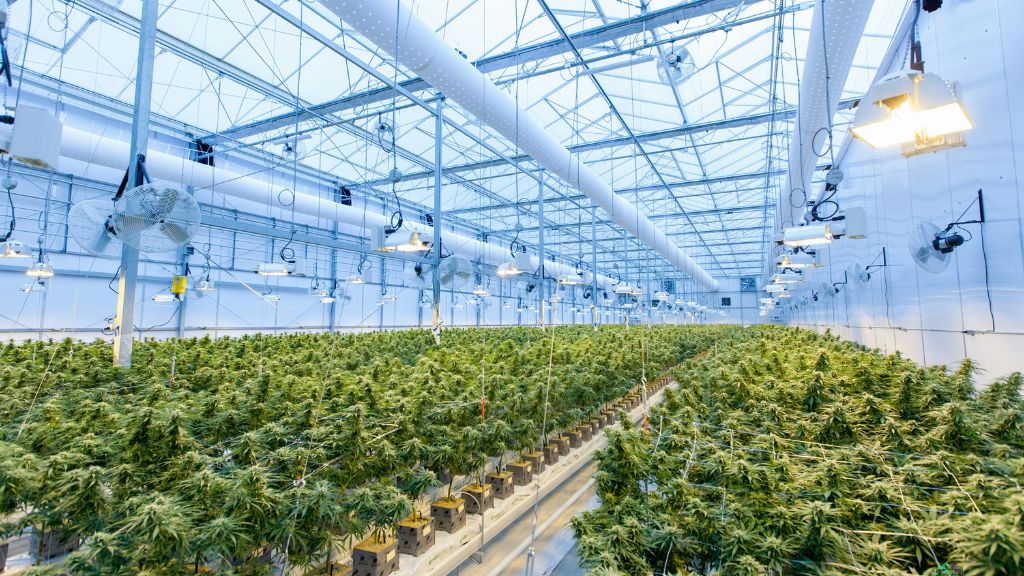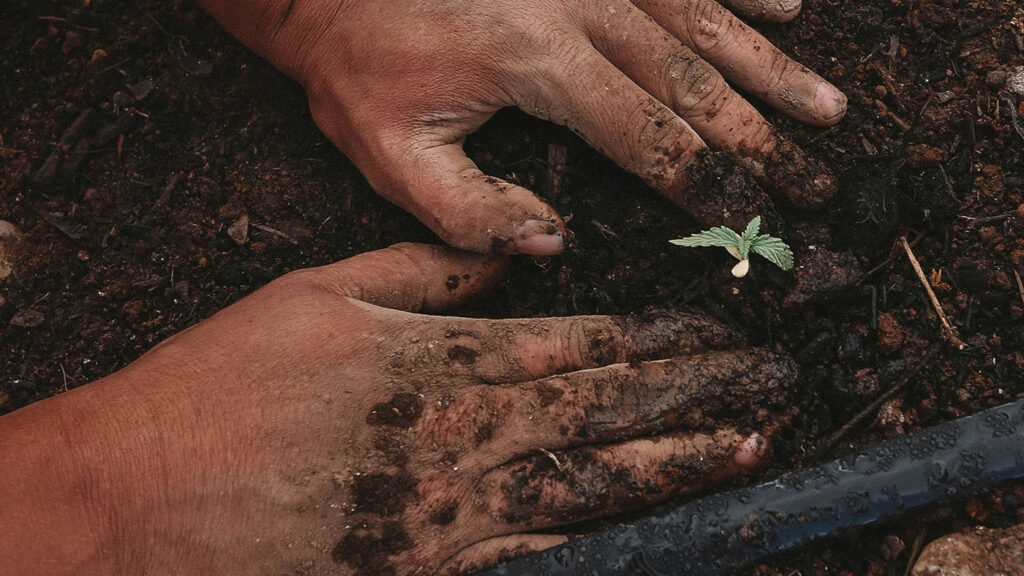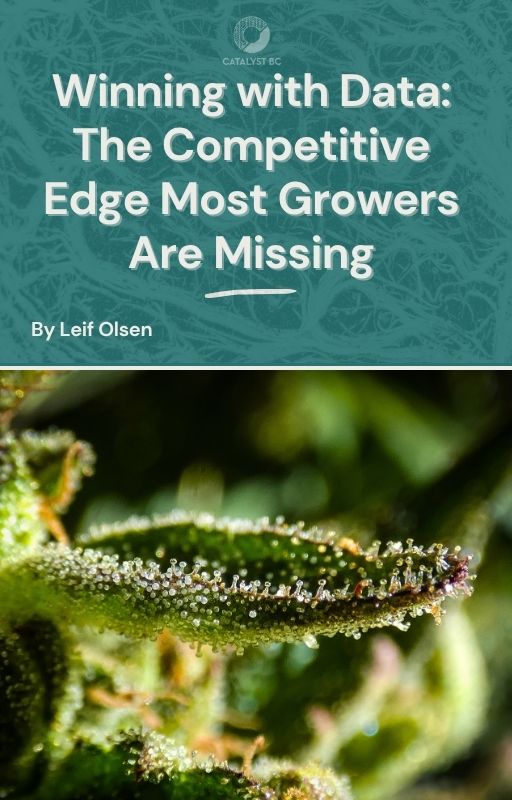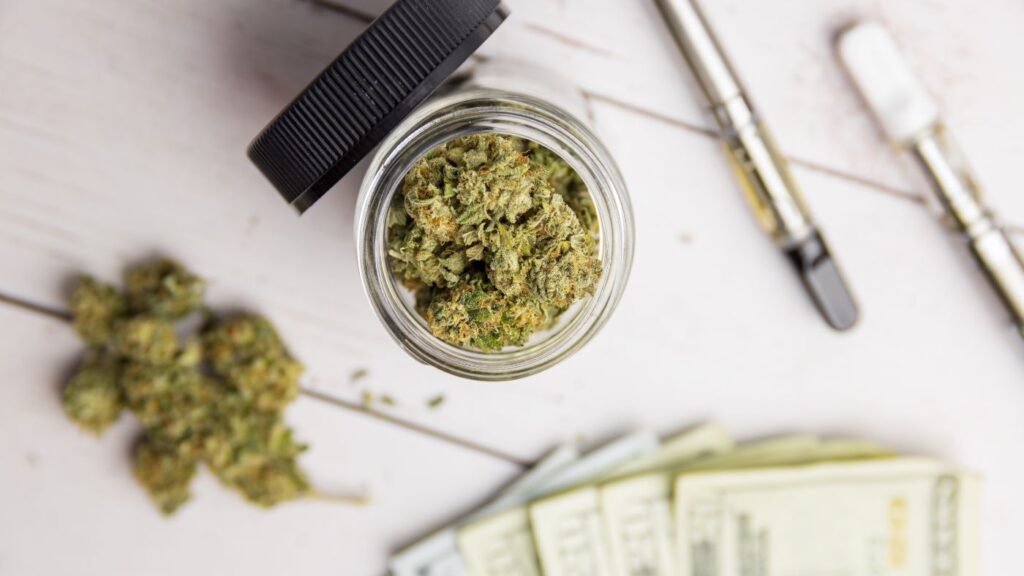Estimated reading time: 9 minutes
Table of contents
- Considerations for Cannabis Grow Medium
- Choosing the Best Cannabis Growing Medium
- Different Types of Cannabis Grow Medium
- Preparation and Maintenance of Growing Medium
- How Can Cannabis Consultants Help Choose a Growing Medium?
- Closing Thoughts
- Additional Resources
- Free eBooks For Cannabis Business Success
- Latest Articles

Considerations for Cannabis Grow Medium
When cultivating cannabis, the type of growing medium you choose plays a foundational role in the success of your crops. Think of it as choosing the right soil for an heirloom tomato plant or selecting the perfect substrate for a tropical orchid—this is just as crucial. The growing medium (or “grow medium”) supports cannabis plants physically, nourishes them with vital nutrients, and ensures proper drainage and aeration to keep roots healthy.
In this guide, we’ll break down the essential factors to consider when choosing the best-growing medium for your cannabis operation. We’ll also explore the benefits and challenges of different types of growing mediums, from traditional soil to high-tech hydroponics. Whether you’re a seasoned grower or just starting, this information will help you make informed decisions for optimizing plant growth and maximizing yields.
Understanding Growing Medium
What is Growing Media?
At its core, growing media refers to the material in which your cannabis plant’s roots reside. It’s the interface between your plants and the environment, essentially acting as a foundation that supports the plant’s physical structure and facilitates nutrient and water absorption. More than just a bed for roots, the growing media creates an optimal environment for your plants to thrive.
The role of growing media extends beyond physical support. It also influences water retention, aeration, nutrient availability, and pH balance—critical elements that directly impact plant health.
Physical Support
For cannabis plants, a growing medium must provide structural support for the roots and stems. The roots must be able to secure themselves within the media and grow downwards, while the stems need to grow upright. This structural integrity is key to plant stability and healthy growth. Without it, plants can become weak, causing slower growth, poor nutrient uptake, and lower yields.
Nutrient Provision
Cannabis plants require a steady supply of nutrients to grow strong and healthy. The growing medium acts as a nutrient reservoir, storing essential macronutrients (like nitrogen, phosphorus, and potassium) and micronutrients (like calcium, iron, and magnesium). These nutrients are released into the plant’s root zone, where they are absorbed.
Nutrient-rich growing media ensure your plants receive everything they need for growth, from the early seedling stage to flowering. Choosing the right medium can help provide balanced nutrition throughout the lifecycle.
Water Retention and Aeration
Cannabis plants require a delicate balance of water retention and drainage. The growing medium must retain enough water to keep roots hydrated, but also allow excess water to drain away to prevent waterlogged conditions. Good aeration is also crucial, as the roots need oxygen to thrive. Media that retains too much water can drown roots, leading to root rot, while media with poor water retention can cause dehydration.
Striking this balance ensures your plants are neither water-starved nor suffocated by excess moisture. This is especially important for cannabis plants, which are sensitive to both water and oxygen imbalances in their root zones.
Choosing the Best Cannabis Growing Medium
The right cannabis grow medium depends on several factors, including the specific needs of your cannabis strains, environmental conditions, and the cultivation methods you employ. Some strains may flourish in traditional soil, while others may thrive in more controlled hydroponic systems. As every grower knows, it’s not one-size-fits-all—there are several types of growing media, and each serves a unique purpose.
Our team at Catalyst BC are experts at evaluating which medium is best suited for your particular commercial environments and strains. Whether you’re cultivating in a hot, dry climate or a humid environment, understanding the specific preferences of your plants will guide your choice of growing media.
Environmental Factors
Environmental conditions such as temperature, humidity, and airflow can affect the performance of different types of growing media. For instance, in a hot, arid environment, media with higher water retention (like coco coir or peat moss) might be necessary to ensure plants don’t dry out. On the other hand, in regions with high humidity, you may prefer a media that drains quickly to prevent root rot and mold.
By adjusting your choice of growing media to the unique conditions in your grow room or outdoor environment, you can optimize your growing setup and avoid common pitfalls.
Water Retention and Drainage Capabilities
Water retention and drainage are at the heart of choosing the best-growing media for cannabis. Cannabis roots need consistent access to water without the risk of becoming waterlogged, which is why proper drainage is essential. Too much water can suffocate the roots, leading to a lack of oxygen, root rot, and stunted growth. At the same time, too little water can cause dehydration, stunting plant development and yield potential.
Knowing your plant’s water needs will help you pick the right growing medium. Some media, like soil, naturally retain moisture for longer periods, while others, like hydroponic mediums, offer quicker drainage.
Nutrient Retention and Availability
A growing medium’s ability to hold and release nutrients affects the overall health and growth rate of your cannabis plants. Mediums with high nutrient retention are particularly beneficial for supporting cannabis through different growth stages, especially if you’re working with a nutrient regimen.
Some media, like coco coir, release nutrients slowly over time, giving plants steady access to the resources they need. It’s important to balance nutrient-rich media with your feeding program to ensure plants are neither overfed nor deprived.
pH Levels and Importance of Balance
Cannabis plants thrive in a specific pH range—typically between 6.0 and 7.0. Growing media that maintains a consistent pH helps the plant absorb nutrients effectively. Media with poor pH stability can lead to nutrient lockout, where essential nutrients become unavailable to the plant, causing deficiencies.
Regular monitoring and adjustment of pH levels are necessary to keep plants healthy. This can be done with pH meters, adjusting nutrients, or amending the growing medium with specific pH-adjusting agents.
Different Types of Cannabis Grow Medium
There are a variety of growing mediums that cater to different cultivation methods. Let’s take a deeper look at the most popular options:
Soil
Soil is the most traditional cannabis grow medium and still remains popular today, especially for beginner and hobby growers. Its natural composition supports healthy microbial ecosystems, which can improve nutrient cycling. Soil also offers excellent water retention, reducing the frequency of watering.
Pros:
- Provides natural nutrients and minerals.
- Supports microbial life that aids in nutrient cycling.
- Easy for beginners to manage.
Cons:
- Can harbor pests and pathogens.
- May become compacted over time, hindering root growth.
- Requires careful monitoring of pH and nutrient levels.
Coco Coir
Derived from coconut husks, coco coir is a soilless medium that offers excellent water retention, aeration, and a neutral pH. It’s ideal for hydroponic setups but can also be used in traditional containers.
Pros:
- Neutral pH and excellent moisture retention.
- Provides good aeration, preventing root suffocation.
- Sustainable and eco-friendly.
Cons:
- Lacks inherent nutrients, requiring frequent nutrient supplementation.
- May need frequent rinsing to remove salts.
Hydroponic Systems
Hydroponics eliminates soil entirely, offering growers a system of nutrient-rich water that directly delivers nutrients to the plants’ roots. This system can be paired with mediums like rock wool, clay pellets, or LECA (lightweight expanded clay aggregate).
Pros:
- Optimal control over nutrient levels and water.
- Accelerated growth and higher yields.
- Reduced risk of pests and diseases.
Cons:
- Requires technical expertise and specialized equipment.
- Potentially higher initial costs and complexity.
Preparation and Maintenance of Growing Medium
Proper preparation and maintenance of growing mediums are essential for achieving optimal plant growth. Sterilization and pasteurization help eliminate harmful pests, pathogens, and weed seeds, reducing risks for plant diseases.
Amending your growing medium involves adjusting the mix to ensure it has the right balance of aeration, water retention, and nutrients. For soil, this could mean adding compost or perlite, while soilless growers may need to add specific pH-adjusting agents or slow-release fertilizers.
Regular pH and nutrient level monitoring help keep plants in the ideal growing conditions, promoting long-term success.
How Can Cannabis Consultants Help Choose a Growing Medium?
Cannabis consultants are experts who help businesses and commercial cultivators make the best decisions for their operations. They can analyze your unique environmental conditions, strain preferences, and cultivation goals to recommend the most suitable cannabis grow medium.
Consultants often possess in-depth knowledge about optimizing growing conditions, legal compliance, and effective use of equipment, helping businesses maximize profitability and yield. Catalyst BC are global cannabis consultants that help businesses around the world understand the best growing medium for their operations.
Closing Thoughts
Selecting the right cannabis grow medium is essential for cultivating healthy fruitful plants. With the right medium, you can ensure that your plants have all the nutrients, water, and support they need to thrive. Whether you choose soil, coco coir, or a hydroponic system, understanding the benefits and limitations of each option allows you to make an informed decision based on your cultivation goals.
Additional Resources
Free eBooks For Cannabis Business Success
Latest Articles
- Cannabis Startup Costs: From Licensing to ProfitabilityStarting a legal cannabis business isn’t just about getting a license—it’s about building a profitable, compliant, and sustainable operation in one of the world’s most capital-intensive and regulated industries. Many entrepreneurs enter this space with many goals, good intentions, and passion, but ultimately fail because they underestimate the cost, complexity, experience, and time required to turn a cannabis license into a thriving business.
- Cannabis License Pitfalls: How to Avoid Common Cannabis Licensing MistakesAs new adult-use programs launch, many entrepreneurs are eager to start growing, processing, or selling cannabis. Excitement runs high, but the industry’s heavy regulations and complex operations can quickly overwhelm even experienced business owners. Common mistakes include underestimating compliance requirements, rushing facility design, skipping proper procedures, and more.
- Maximizing Your Minnesota Cannabis Microbusiness or Mezzobusiness LicenseMinnesota’s new adult-use cannabis law allows microbusinesses (one store, up to 5,000 sq ft indoor, ½ acre outdoor) and mezzobusinesses (up to 3 stores, 15,000 sq ft indoor, 1 acre outdoor) to cultivate, manufacture, sell, and transport cannabis under one license. These vertically integrated licenses offer flexibility, but also come with complex state rules.
- The Recipe for a Top-Tier Cannabis DispensaryOperating a highly reviewed, top-performing cannabis dispensary takes more than simply stocking product and unlocking the doors. It requires operational discipline, regulatory expertise, top-tier customer service, dynamic merchandising, and a culture of accountability and community. With the cannabis industry continuing to expand—and regulations constantly evolving—success is defined by how seamlessly a dispensary integrates compliance, product curation, staff training, and marketing into day-to-day operations.
- Minnesota Lottery Results: June 5 Cannabis License Drawings and What’s NextThe Minnesota Lottery for cannabis business licenses reached a pivotal milestone on June 5, as the Office of Cannabis Management (OCM) conducted randomized drawings for select license types. These lotteries were open to both social equity applicants and general applicants vying for limited licenses to operate as cultivators, manufacturers, and mezzobusinesses. Additionally, a separate lottery was held exclusively for social equity applicants seeking a retail cannabis license.
- Cannabis Compliance Isn’t Just a Department—It’s a SystemCompliance in the cannabis industry is too often approached as a box-checking exercise or relegated to a single department or, in some cases, a single person. In reality, cannabis compliance must be woven into every aspect of operations – from seed to sale – to truly protect and propel a business forward.











